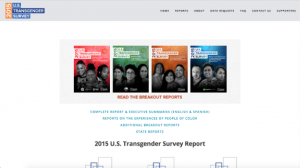Some good items here. Bill
---------- Forwarded message ---------
From: scout@scout.wisc.edu <scout@scout.wisc.edu>
Date: Fri, Oct 26, 2018 at 8:31 AM
Subject: The Scout Report -- Volume 24, Number 43
To:
From: scout@scout.wisc.edu <scout@scout.wisc.edu>
Date: Fri, Oct 26, 2018 at 8:31 AM
Subject: The Scout Report -- Volume 24, Number 43
To:
 |
October 26, 2018
Volume 24, Number 43 |
Research and Education | General Interest |
Network Tools | Revisited |
In the News |
If you would like to make a tax-deductible contribution to support The Scout Report and the work of Internet Scout, please visit our donation page.
Research and EducationBack to Top | |
 | |
 | |
 | |
 | |
 | |
 | |
 | |
General InterestBack to Top | |
 | |
 | |
 | |
 | |
 | |
 | |
 | |
Network ToolsBack to Top | |
 | |
 | |
RevisitedBack to Top | |
 | |
In the NewsBack to Top | |
NASA Captures Photo of Rectangular Antarctic Iceberg
| |
Rectangular iceberg calves Twitter spike
https://physicsworld.com/a/rectangular-iceberg-calves-twitter-spike
What's Going On With That Bizarre Rectangular Iceberg?
https://www.npr.org/2018/10/23/659799976/whats-going-on-with-that-bizarre-rectangular-iceberg
This iceberg is perfectly rectangular--here's why
https://www.nationalgeographic.com/environment/2018/10/this-iceberg-is-perfectly-rectangular-explained
Operation IceBridge
https://icebridge.gsfc.nasa.gov
National Snow & Ice Data Center: Quick Facts on Icebergs
https://nsidc.org/cryosphere/quickfacts/icebergs.html
The Antarctic Report
https://www.antarcticreport.com
Recently, an unusual social media star rose to fame -- an iceberg with a distinctively regular geometric shape. The photo of this tabular iceberg was captured close to the Larsen C ice shelf in Antarctica by NASA scientist Jeremy Harbeck on October 16, 2018, as part of Operation IceBridge, an aerial survey that monitors polar sea ice. Harbeck stated, "I often see icebergs with relatively straight edges, but I've not really seen one before with two corners at such right angles as this one had." The image attracted a fair amount of attention after NASA posted the photo on Twitter on October 17, garnering (as of this write-up) over 23,000 likes and 10,000 retweets, and generating curiosity about the iceberg's origins. It turns out that tabular icebergs such as this are fairly common. As University at Buffalo geophysicist Kristin Poinar explained to National Geographic, "The Larsen C is a large ice shelf. The ice has time to spread out and become perfectly flat," so when an iceberg calves, as the 'berg in the photo is believed to have recently done, it can fracture along relatively straight lines, creating the angular shape seen in NASA's photo. [JDC]
At the first three links, readers will find recent news articles explaining the unusual-looking iceberg. These were written by Liz Kalaugher for Physics World, Merrit Kennedy for NPR, and Sarah Gibbens for National Geographic, respectively. Readers interested in learning more about Operation IceBridge, the NASA program under which the iceberg photo was taken, will find the program's website at the fourth link, along with details about the program's data and the various instruments used to collect it. The fifth link brings readers to the National Snow & Ice Data Center's Quick Facts on Icebergs for an overview of the topic. Other parts of this resource contain abundant scientific datasets, as well as research and information about the cryosphere, so the entire site is worth exploring. Finally, at the sixth link readers will find The Antarctic Report, a New Zealand-based publication "dedicated to all things on Antarctica and the Southern Ocean," such as the region's scientific significance and its "unique political status."
| |
--